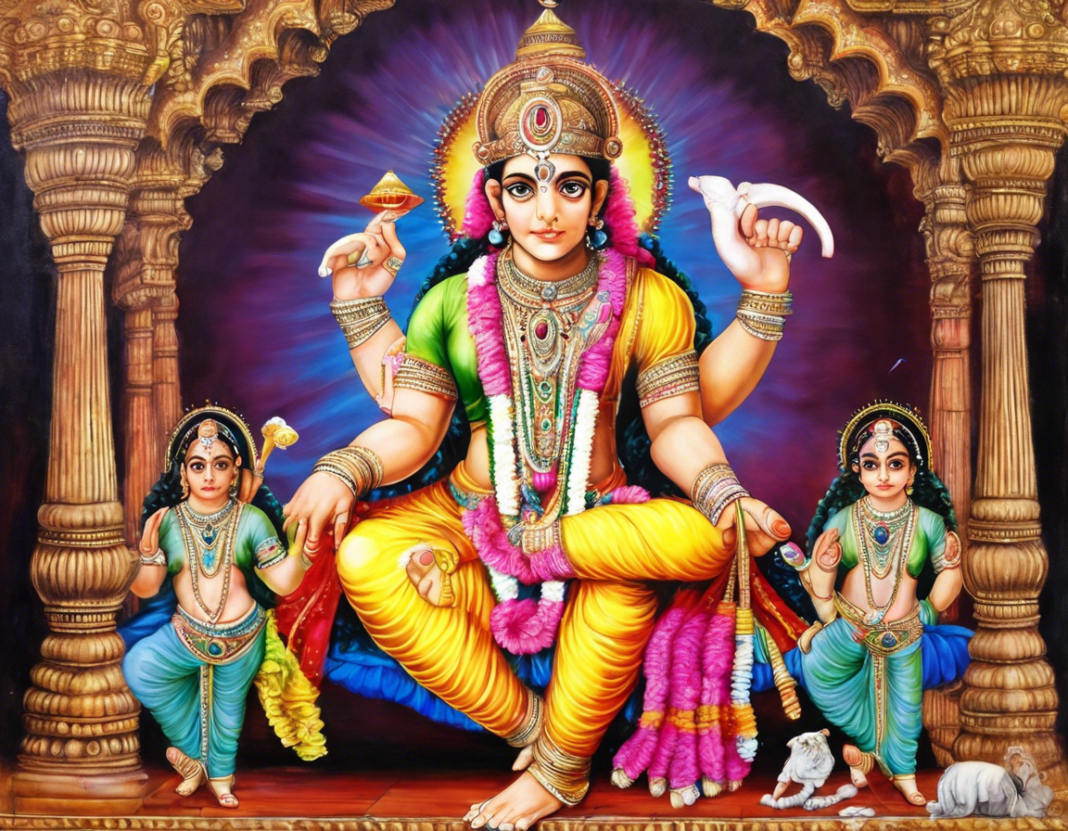Ram Lala Ki Murti, also known as the infant Lord Ram deity in the city of Ayodhya, holds immense significance in Hindu mythology and cultural heritage. The murti, a term denoting a sacred image or form, specifically represents Lord Ram as a child. This article delves into the history and meaning of Ram Lala Ki Murti, shedding light on its revered status among devotees.
Ram Lala Ki Murti: A Divine Symbol
The story of Ram Lala Ki Murti traces back to the epic Ramayana, where Lord Ram, an incarnation of the god Vishnu, is born as the prince of Ayodhya. As a child, Lord Ram embodies innocence, purity, and divinity, attracting adoration and love from his followers. The image of Ram Lala Ki Murti captures this essence, depicting the infant Lord in a serene and captivating form.
Historical Background
The installation of the Ram Lala Ki Murti in Ayodhya dates back centuries, symbolizing the divine presence of Lord Ram in the holy city. The Ayodhya region holds immense significance in Hindu mythology as the birthplace of Lord Ram, making the murti a focal point of pilgrimage and worship for millions of devotees.
Cultural and Religious Significance
The murti of Ram Lala serves as a sacred symbol of devotion and faith for Hindus worldwide. Devotees believe that worshiping the infant Lord Ram brings blessings, protection, and fulfillment of desires. The presence of Ram Lala Ki Murti in temples and households invokes a sense of peace, tranquility, and spiritual connection with the divine.
Worship and Rituals
Devotees engage in various rituals and offerings to honor Ram Lala Ki Murti, including daily prayers, aarti (rituals involving worship with lighted lamps), and bhajans (devotional songs). Celebrations such as Ram Navami, the birthday of Lord Ram, witness grand festivities and worship of the infant deity with fervor and devotion.
The Symbolism of Ram Lala Ki Murti
The murti of Ram Lala embodies profound symbolism and teachings from the Ramayana. As an infant, Lord Ram represents innocence, purity, and divine grace, inspiring devotees to cultivate similar virtues in their lives. The playfulness and adorable form of the infant Lord Ram symbolize the joy and love inherent in spiritual devotion.
Lessons from Ram Lala
Devotees reflect on the teachings of Lord Ram through the murti of Ram Lala, imbibing qualities of compassion, righteousness, and humility. The innocence and simplicity of the infant deity serve as a reminder to approach life with a pure heart and unwavering faith in the divine.
FAQs (Frequently Asked Questions)
- What is the significance of Ram Lala Ki Murti in Hindu mythology?
-
Ram Lala Ki Murti represents Lord Ram as an infant, embodying innocence, purity, and divine grace in Hindu mythology.
-
Why is Ayodhya considered the birthplace of Lord Ram?
-
Ayodhya is believed to be the birthplace of Lord Ram based on the ancient texts and scriptures, making it a sacred city for Hindus.
-
How do devotees worship Ram Lala Ki Murti?
-
Devotees worship Ram Lala Ki Murti through daily prayers, aarti, bhajans, and special ceremonies on auspicious occasions.
-
What lessons can be learned from the symbolism of Ram Lala Ki Murti?
-
The symbolism of Ram Lala Ki Murti teaches virtues like innocence, purity, compassion, and devotion, inspiring devotees to lead a righteous life.
-
Is Ram Lala Ki Murti only revered in Ayodhya?
-
While Ayodhya holds special significance, Ram Lala Ki Murti is revered in temples and households worldwide as a symbol of divine grace and protection.
-
How does the presence of Ram Lala Ki Murti influence devotees’ spiritual practices?
-
The presence of Ram Lala Ki Murti invokes a sense of peace, connection with the divine, and inspiration for devotees to deepen their spiritual practices.
-
What role does Ram Lala Ki Murti play in festivals like Ram Navami?
- During festivals like Ram Navami, devotees celebrate the birth of Lord Ram by offering special prayers, rituals, and devotional observances to Ram Lala Ki Murti.
In conclusion, Ram Lala Ki Murti stands as a revered symbol of divinity, purity, and innocence, inspiring devotees to cultivate virtues and lead a life of devotion and righteousness. The legacy of the infant Lord Ram continues to resonate with followers, serving as a source of inspiration and spiritual guidance in their journey towards the divine.




